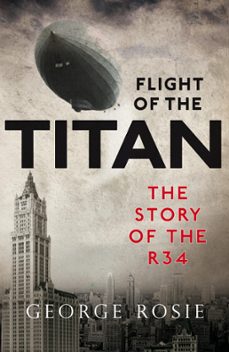Imprescindibles
Ficción
No Ficción
Ciencias y tecnología Biología Ciencias Ciencias naturales Divulgación científica Informática Ingeniería Matemáticas Medicina Salud y dietas Filología Biblioteconomía Estudios filológicos Estudios lingüísticos Estudios literarios Historia y crítica de la Literatura
Humanidades Autoayuda y espiritualidad Ciencias humanas Derecho Economía y Empresa Psicología y Pedagogía Filosofía Sociología Historia Arqueología Biografías Historia de España Historia Universal Historia por países
Infantil
Juvenil
#Jóvenes lectores Narrativa juvenil Clásicos adaptados Libros Wattpad Libros Booktok Libros de influencers Libros de Youtubers Libros Spicy Juveniles Libros LGTBIQ+ Temas sociales Libros ciencia ficción Libros de acción y aventura Cómic y manga juvenil Cómic juvenil Manga Shonen Manga Shojo Autores destacados Jennifer L. Armentrout Eloy Moreno Nerea Llanes Hannah Nicole Maehrer
Libros de fantasía Cozy Fantasy Dark academia Hadas y Fae Romantasy Royal Fantasy Urban Fantasy Vampiros y hombres lobo Otros Misterio y terror Cozy mistery Policiaca Spooky Terror Thriller y suspense Otros
Libros románticos y de amor Dark Romance Clean Romance Cowboy Romance Mafia y amor Romance dramatico Romcom libros Sport Romance Otros Clichés Enemies to Lovers Friends to Lovers Hermanastros Slow Burn Fake Dating Triángulo amoroso
Cómic y manga
Novela gráfica Novela gráfica americana Novela gráfica europea Novela gráfica de otros países Personajes, series y sagas Series y sagas Star Wars Superhéroes Cómics DC Cómics Marvel Cómics otros superhéroes Cómics Valiant
eBooks
Literatura Contemporánea Narrativa fantástica Novela de ciencia ficción Novela de terror Novela histórica Novela negra Novela romántica y erótica Juvenil Más de 13 años Más de 15 años Infantil eBooks infantiles
Humanidades Autoayuda y espiritualidad Ciencias humanas Economía y Empresa Psicología y Pedagogía Filosofía Historia Historia de España Historia Universal Arte Cine Música Historia del arte
Ciencia y tecnología Ciencias naturales Divulgación científica Medicina Salud y dietas Filología Estudios lingüísticos Estudios literarios Historia y crítica de la Literatura Estilo de vida Cocina Guías de viaje Ocio y deportes
GEORGE ROSIE
Recibe novedades de GEORGE ROSIE directamente en tu email
Filtros
Del 1 al 4 de 4
TURNER 9788475068800
Este libro pretende eliminar el tabú sobre los residuos humanos y su gestión. Un problema que supone la principal causa de mortandad en el mundo. Irreverente y sólidamente documentado este ensayo e
Ver más
Tapa blanda
SEIX BARRAL 9788432296239
Victor Frankenstein se jura a sí mismo convertirse en el implacable enemigo de la muerte, tras la lenta y atormentada defunción de su amada madre. Este joven, fascinado por la nueva era de la ciencia, nos traslada desde su hogar infantil en la Republica de Ginebra, hasta Baviera y las salas de diseccion de Londres. En calidad de cirujano militar del ejercito de Napoleon en el Danubio, emrpende un viaje en el que nos encontraremos con diversos personajes historicos. Nos situa asi, en el turbulento escenario politico y cientifico de finales de siglo XVIII y principios del XIX, lleno, por tanto, de pasiones intelectuales.
Ver más
Tapa dura
Birlinn 9780857905611
In the early hours of Thursday, July 10, 1919 hundreds of thousands of New Yorkers rushed out onto the streets and rooftops and gaped up into the sky as a great silver ship, hundreds of feet long, rolled slowly across the city. Restaurants, hotels, theatres and bars emptied as people took to the street to gaze upwards. The ship seemed to hover over the New York Times building in 42nd street before turning its bow to the east and heading off towards the Atlantic. New Yorkers had never seen anything like it. They were left to wonder as the thrum of the engines died away. But it was no alien visitation. The huge silver craft, bearing a lion rampant across its bow, was the Scottish-built airship R34 manned by a 30-strong crew of World War I veterans (and a stowaway cat). A few days earlier the R34 had made the first-ever east-west flight across the Atlantic against powerful head winds and electrical storms. The flight of the R34 was one of the great feats of British aviation and it has been shamefully forgotten - but there is a wealth of information out there.Some of it is in the diary kept by General Edward Maitland, which was later published, other material comes from the flight reports of the airships officers, crew diaries, press interviews, and technical information buried in the National Archives in Kew and in the records of the royal Aeronautical Society and the New York Times. Weaving all of this together, George Rosie paints a vivid picture of the great feats of early 19th Century aviation and one of which Scotland should be immensely proud.
Ver más
eBook
Ara Mini 9788493905514
La remor de les onades ens remet a uns temps pretèrit, passat llunyà que tampoc ho és tant si tenim en compte que parlem dels anys 50 del segle passat. El que dóna la sensació de llunyania és la vida
Ver más
Tapa blanda
Del 1 al 4 de 4



























